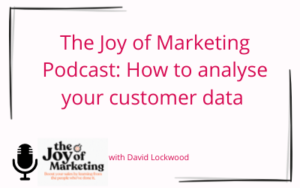The pandemic has shaped our economy for several years now and continues to do so, with China’s zero-Covid policy impacting production and shipping from the Far East. But nearer to home, multi-channel businesses face a wave of economic and geopolitical challenges prolonging this uncertainty. So what are these challenges, and what can ecommerce companies do to try and inject an element of certainty into their businesses?
With inflation at 9% – and set to rise – there’s a generation of consumers who’ve never experienced this before. And linked to this is the cost of living increase, bringing the looming spectre of stagflation and some commentators warning the crisis could be pushing us towards recession. Both these factors impact consumer confidence, and we’re waiting to see the full extent of the consumer reaction on spending and the implications going forward.
War in mainland Europe and NATO expansion are heightening tensions, with implications for cross-border trade, while Brexit continues to serve up unresolved tensions between the UK and Europe. Alongside the potential of ongoing trading difficulties, there’s even talk of a UK – EU trade war.
And while possibly overhyped, the continuing ‘great resignation’ means finding and retaining talent remains difficult, forcing salaries up and adding more cost-base pressures on companies.
Facing up to the marketing challenges
And while the environment retailers operate in is fraught with unknowns, there’s a wealth of challenges making marketing more difficult and expensive.
With demand outstripping supply for online advertising, the result is PPC and CPM inflation, where we’re seeing double-digit price rises. At the same time, iOS 14 updates and subsequent others are impacting campaign visibility. With ongoing implications for targeting, lead generation and measurement, especially on Facebook, marketing investment decisions are more difficult as outcomes are harder to track.
Paper inflation and shortages have also hampered direct mail for some time. With paper needing to be purchased six to seven months in advance, forecasting requirements so far ahead at a time of future economic uncertainties is complex.
And dealing with Covid cohorts – those customers recruited during the pandemic who are now shifting to pre-Covid behaviours and reacting differently to your main customer base – is becoming a challenge. Businesses are struggling to identify them and determine what tactics and strategies to use to market to them, so they continue to buy alongside their traditional customers.
Going into the unknown – again
As multi-channel retailers wrestle with all these challenges, they also face unknown unknowns that make forecasting and measurement difficult.
At its peak during lockdown, nearly 38% of all retail demand was generated online, significantly above the 20-25% growth trend. January 2021 alone saw 68% more online demand as a percentage of retail than under trended assumptions. So while retail generally was down 10%, any multi-channel company not up 51% last January compared to the previous year was losing market share.
But as the markets adjust closer to the anticipated trends, what exactly is the trend? Today, the idea of year-on-year comparisons arguably doesn’t exist. You must go back to 2019 to get like-for-like figures. But today’s businesses are drastically different in terms of product offering, customers, channels and how they operate, making future planning based on past performance continually problematic.
Consumer mindsets are changing
The changing nature of how consumers see today’s world also has business implications.
Now they want values, not just value, from the brands they interact with. While a few years ago having a net-zero stance was a differentiator, today it’s table stakes, forcing all businesses to develop net-zero and sustainability policies.
Consumers are also trading up from low-quality, throw-away items to higher value and well-made ones offering greater longevity. But as they shift from volume to quality, this impacts not only on materials and processes for multi-channel retailers but also sales and replacement cycles.
But despite all the challenges, there is hope. In part 2, we delve into what multi-channel retailers can do to introduce more certainty into their businesses: Seeking certainty in uncertain times Part 2 – Bringing some certainty into your business




